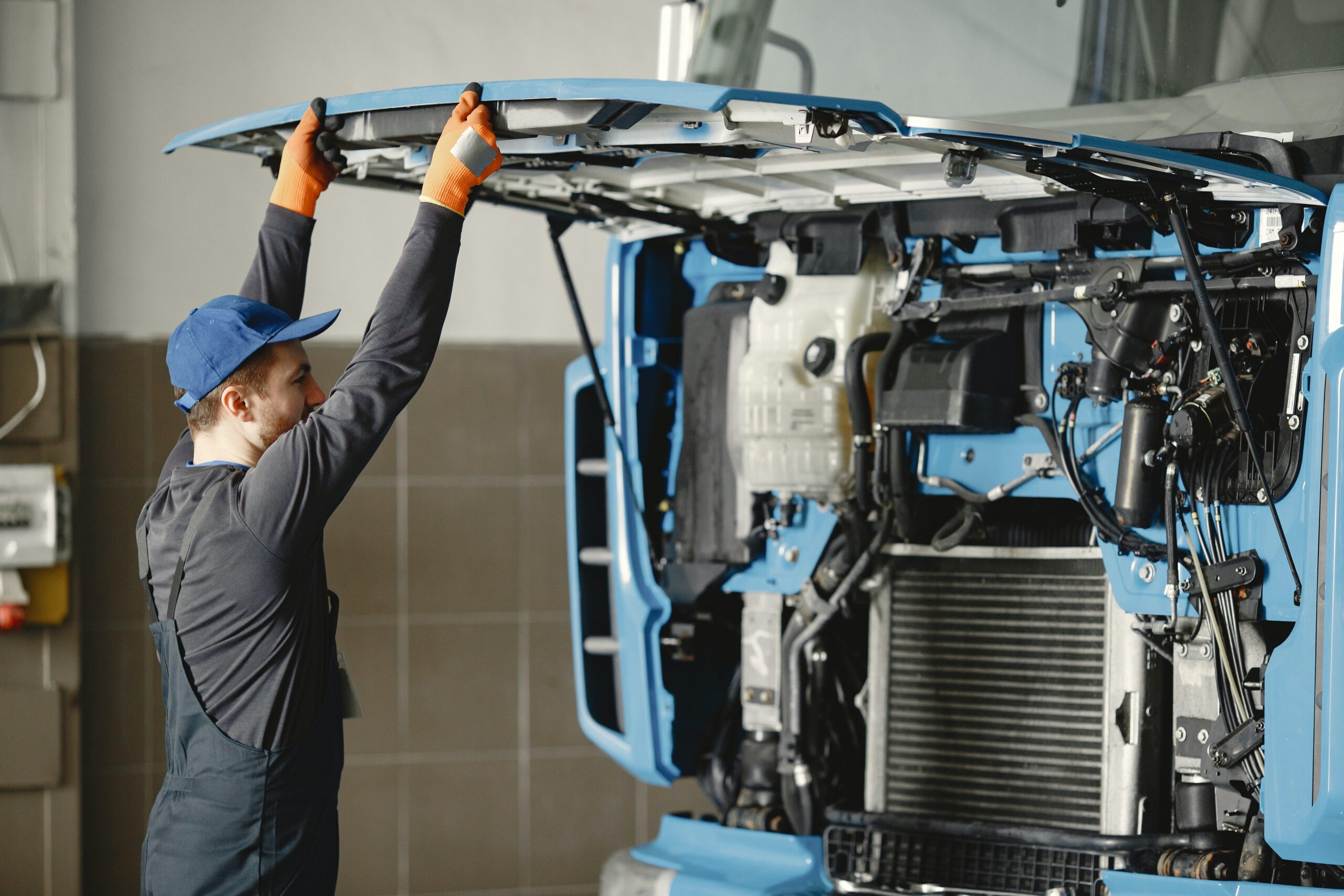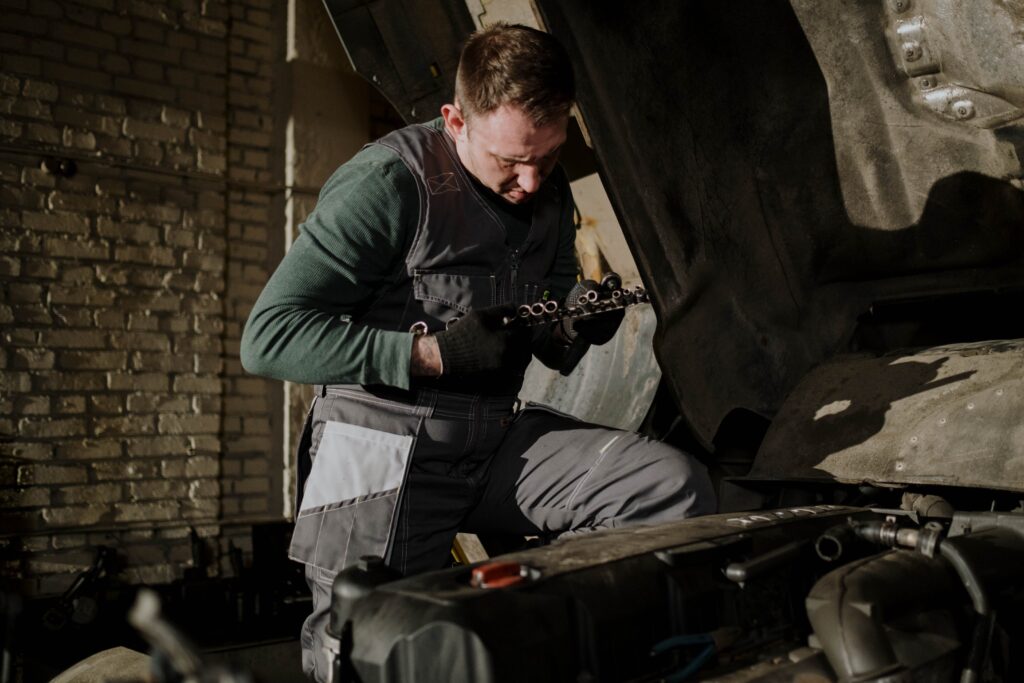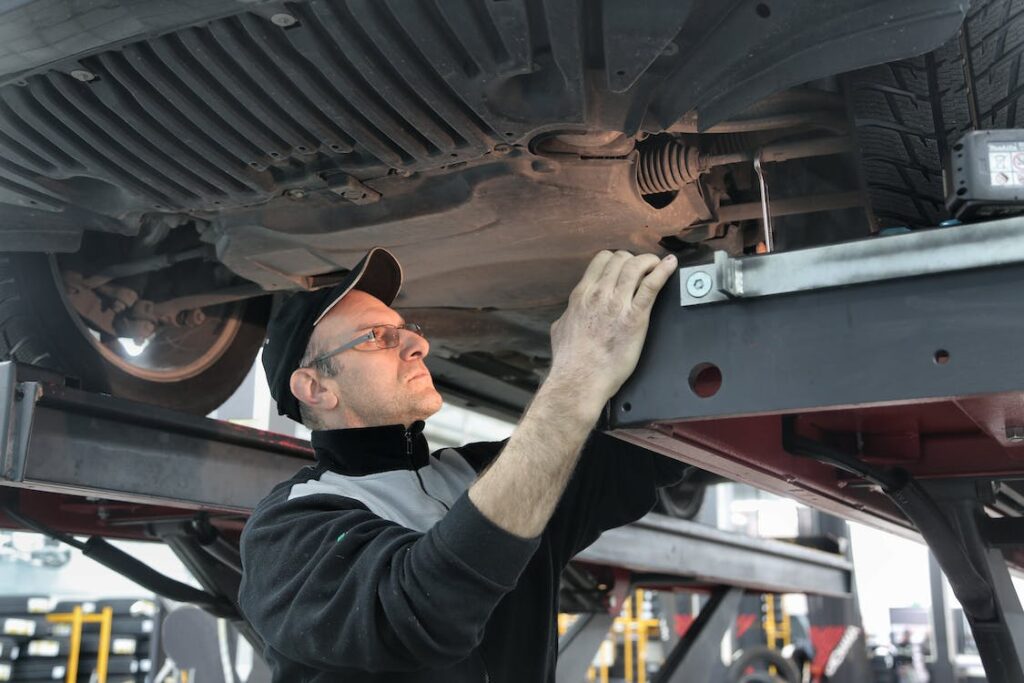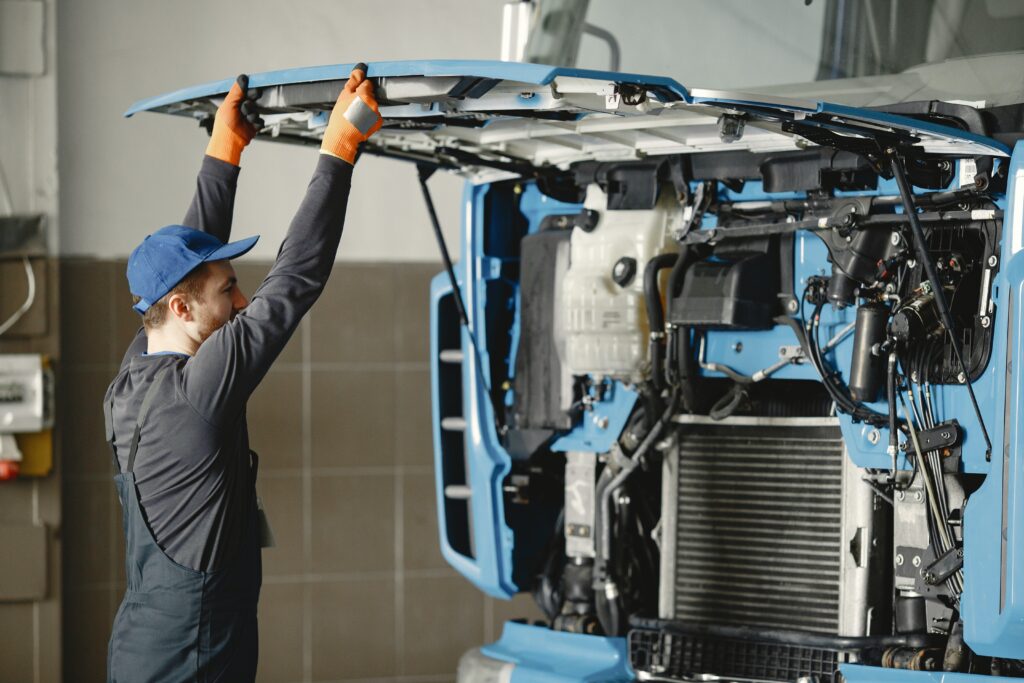You might not know it, but intake manifold gaskets are a vital part of every diesel truck operation. This one-of-a-kind part acts as the connection point between the manifold and the engine block.
The intake manifold gasket forms a seal between these two components. The gasket helps maintain proper engine performance. When it fails, engine failure can occur, which means stalled fleet operations and loss of revenue for you and your team.
Truck drivers, fleet operators, and fleet managers: if you drive anything with the word “diesel” in the vehicle name, it’s crucial to know how an intake manifold gasket can affect your fleet. Protecting your gasket can save you time and money on preventive maintenance, engine replacements, and more.
Certified Fleet Services understands the importance of proper gasket care. For more than 25 years, we’ve been Florida’s go-to provider for quality fleet services, repairs, and maintenance.
If you’re looking to get back on the road faster, look no further. We’ll describe seven of the most common symptoms of a failing intake manifold gasket and what you can do to keep your gasket in working order.
Let’s go for a ride and learn about how to keep your fleet in tip-top shape.
Key article takeaways
- An intake manifold gasket sits on top of the engine and helps the engine breathe. The intake manifold gasket also acts as a seal that opens and closes to allow air and fuel to cylinder heads.
- The intake manifold gasket prevents leaks and fuel from entering the engine.
- The seven symptoms of a failing or bad intake manifold gasket include vacuum leaks, air, and fuel leaks, the engine misfiring, a check engine light turning on, poorer than normal fuel economy, and rough idling
- Replacing and repairing an intake manifold gasket is usually a three-step process.
- If you notice your engine isn’t running at peak performance, check to make sure all compartments in your vehicle are airtight.
- If you notice unusual exhaust or liquid around your vehicle, don’t drive your vehicle. Call your local diesel repair mechanic for immediate assistance.
What is an intake manifold gasket?
For many of us, the words “intake manifold gasket” can sound like a mouthful. To be able to fix it, though, we’ll need to understand the form and function of this trusted piece of equipment.
This piece of equipment sits on top of the engine and plays a key role in the combustion process.
You can think of the intake manifold gasket as the lungs of the engine. The gasket helps the engine breathe.
The gasket includes a series of tubes that allow air to come into the engine evenly and throughout all engine cylinders. Best of all, gaskets have reinforced edges and linings around each runner opening to prevent decay caused by oils and coolants.
In short, the performance of your engine depends on the healthy functioning of the intake manifold gasket. Let’s see how this vital engine component works.
Understanding how an intake manifold gasket works
This hearty piece of equipment is made of rubber, silicone, and other composite materials. It can withstand the high temperatures and pressures involved in the combustion process. The way an intake manifold gasket works is the following:
- An intake manifold gasket creates a tight seal preventing air, fuel, and coolant leaks from occurring in and around the engine.
- The air used during the combustion process helps cool the cylinders and prevent the engine from overheating. The coolant then runs through the manifold to the cylinder heads where heat is absorbed and the engine temperature drops.
- Air from outside the vehicle moves past the air filter into a throttle body section that controls airflow.
- Air exits this throttle section and enters the intake manifold’s main body.
- The air is then drawn from the intake manifold into a series of tube-shaped runners (or passages) through a vacuum created by the engine’s pistons located on the cylinder chambers of the engine block. The manifold secures to the engine’s cylinder heads. The runners are located above the intake valves.
- Finally, the air exits the manifold. The air mixes with fuel from the fuel injectors and travels to the cylinders below, keeping the cylinders cool and preventing the engine from overheating.
No wonder a vacuum leak or a leaky intake manifold gasket can spell trouble for your fleet vehicle. Knowing what an intake manifold leak looks, smells, and sounds like can help better manage your fleet and keep your fleet drivers safe.
7 symptoms of a failing intake manifold gasket
The 7 Symptoms
|
We’ll discuss each of these tell-tale symptoms of a bad gasket in detail in the next sections.
1. Air of vacuum leaks
A damaged intake manifold gasket often has cracks and gaps in its foundation. With cracks and gaps present, air or vacuum leaks can occur.
The worst part is that these leaks can affect the air-to-fuel ratio inside the engine. As a result, the engine may vibrate and revolutions per minute (RPM) may become unstable.
With an air or vacuum leak, a vehicle can make a hissing sound, can stall, and have trouble starting altogether.
2. Coolant leaks
Worth noting is the fact that intake manifold gaskets also act as a buffer between where the coolant and the intake manifold is. A coolant loss or leak in the intake manifold can result in an engine overheating.
How can you tell if a coolant leak occurs? Fun fact: you can smell and see it.
If you notice a sweet smell while sitting in the car, driving, or in park — or if you notice traces of coolant under the hood — your vehicle might be experiencing a coolant leak.
3. Green, red, or yellow leaks under the vehicle
Multi-colored leaks under a vehicle could be a sign of a leaking intake manifold. Green, red, or yellow could be the result of an antifreeze, power steering fluid, or transmission fluid leak.
Each of these leaks could result or come from a leak in the intake manifold gasket seals. In any case, you’ll want to schedule an appointment with your fleet technician or mechanic as soon as possible.
Quick diagnosis and repair are crucial to helping get your fleet back in order and ensuring no engine damage occurs.
4. Engine misfiring or overheating
Intake manifold gaskets play a key role in regulating the air-fuel balance in a vehicle’s engine cylinders. As a result, a failing gasket can lead to faulty engine cylinders, which can result in engine misfires or overheating.
An engine is misfiring if it hesitates or jerks during acceleration. Other symptoms besides acceleration issues include less power and delayed throttle responses.
5. Check engine light turns on
Yep, the infamous check engine light. If you notice your engine misfiring, the check engine light may also turn on.
The check engine light might be turning on because misfire codes are triggering the engine’s computer system. Pro-tip for fleet drivers: we recommend buying a telematics device to better understand what each fault code means.
Doing so will keep your fleet drivers safe and save your mechanic time in repairing issues.
6. Poor fuel economy
Drivers driving with a faulty intake manifold gasket may experience poorer than normal fuel efficiency. Poor fuel economy can occur as a result of an imbalance in the air-fuel mixture in and around the intake manifold and the engine.
If you find yourself filling up your tank more than normal — or experiencing fewer miles per gallon — you may have a bad intake manifold gasket on your hands.
7. Rough idling
Damaged manifold gaskets can cause unstable speeds, that is, while idling. You may experience unusual vibrations coming from the engine.
The RPMs on the car may dip or rise without rhyme or reason. Unusual bouncing, shaking, noises, or vibrations from a vehicle may present as symptoms of a bad intake manifold gasket.
Truck fact #27
Fact: Did you know that approximately 5.8% of all full-time jobs in America are trucking-related?
Replacing and repairing an intake manifold gasket
If you’ve noticed any of the above signs of a poor or faulty manifold gasket, consider replacing or repairing this crucial component. You can install and repair your intake gasket in three simple steps:
- Remove the intake manifold
- Clean the surfaces of the manifold and the engine block
- Install your new or high-quality aftermarket intake manifold gasket
If you need help with repairs or the installation process, you can always reach out to any of our qualified diesel mechanics or your local fleet service provider.
Fix your intake manifold gasket with a quality inspection
A little help goes a long way. When you’re able to recognize the signs and symptoms of bad intake manifold gaskets, you’re able to protect your fleet vehicle’s engine from unnecessary wear and tear.
The seven most common symptoms of a failing intake manifold gasket include air and vacuum leaks, fuel leaks, engine misfires, a check-engine light turning on, poor fuel economy, and rough idling.
If you’d like to get back on the road faster, the Certified Fleet Services team can help. With more than three locations across the Florida area, our ASE-certified diesel technicians are waiting on stand-by ready to help you with all your fleet repair needs.
Stuck on the road? Not to worry.
Our mobile repair team can come out to you and inspect your vehicle in a jiff. Don’t hesitate to reach out to any of our dependable mechanics for help with your next repair or maintenance job.
A message from our co-owner, Steve Connor
We’re at the end of another year. There are opportunities you can take advantage of.
It’s prime time to get your truck inspected. Come on down to our shop for prompt and reliable service.
Can’t get your equipment down to one of our shops? Don’t worry.
Certified Fleet Services now has mobile repair. Call us today to learn more!
Common Questions About Intake Manifold Gaskets
What are the 7 symptoms of bad intake manifold gaskets?
The seven most common symptoms of failing intake manifold gaskets include:
- Air or vacuum leaks from within the engine
- Coolant leaks
- Green, red, or yellow leaks (from other vehicle fluids and liquids)
- Engine misfires or overheating
- Check engine light turning on
- Poorer than normal fuel economy
- Rough idling and unstable speeds while at a stop
How can I fix a broken intake manifold gasket?
To prevent needing unnecessary repairs (or worse yet, an engine replacement), you can fix your broken intake manifold by removing the intake manifold, cleaning off the engine area, and replacing your new intake manifold gasket with a new or aftermarket intake manifold gasket.
Alternatively, you can also take your vehicle to your local fleet repair service center or diesel mechanic. Consider using an OBD-II scanner or telemetrics system before bringing your vehicle in for repairs.
Doing so will help your mechanic and repair technician speed up the diagnosis and repair process.
Can I drive with a cracked intake manifold gasket?
Definitely not! Coolant may be leaking from your vehicle, which can be harmful to the sensors in the vehicle. Not to mention coolant leaks can also be harmful if inhaled in large quantities.
If you spot an unusual puddle or fuel mixture underneath or around your vehicle, don’t operate your vehicle. Instead, reach out to a mobile fleet repair team to help you dispose of the fuel mixture. Improper disposal and contact with dangerous fuel can cause serious health problems.














